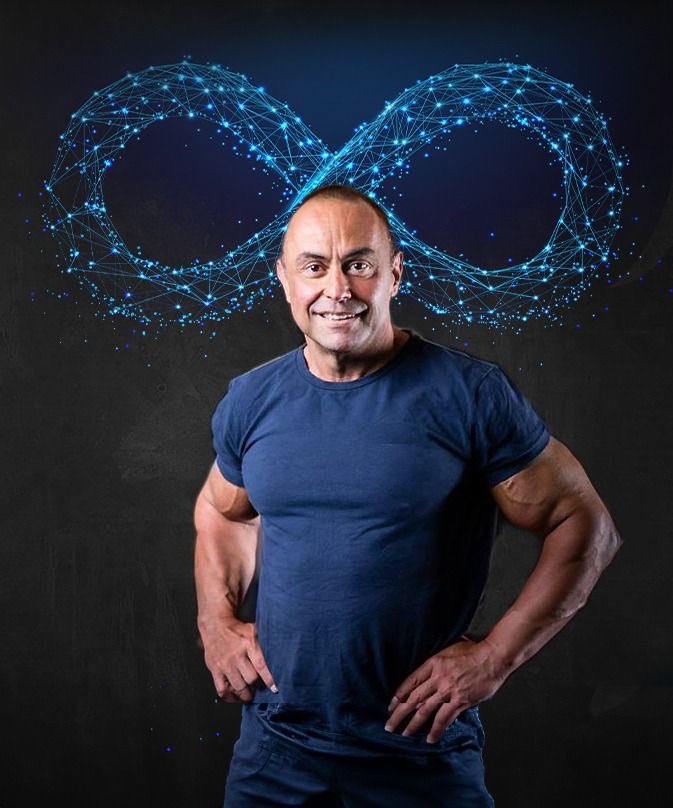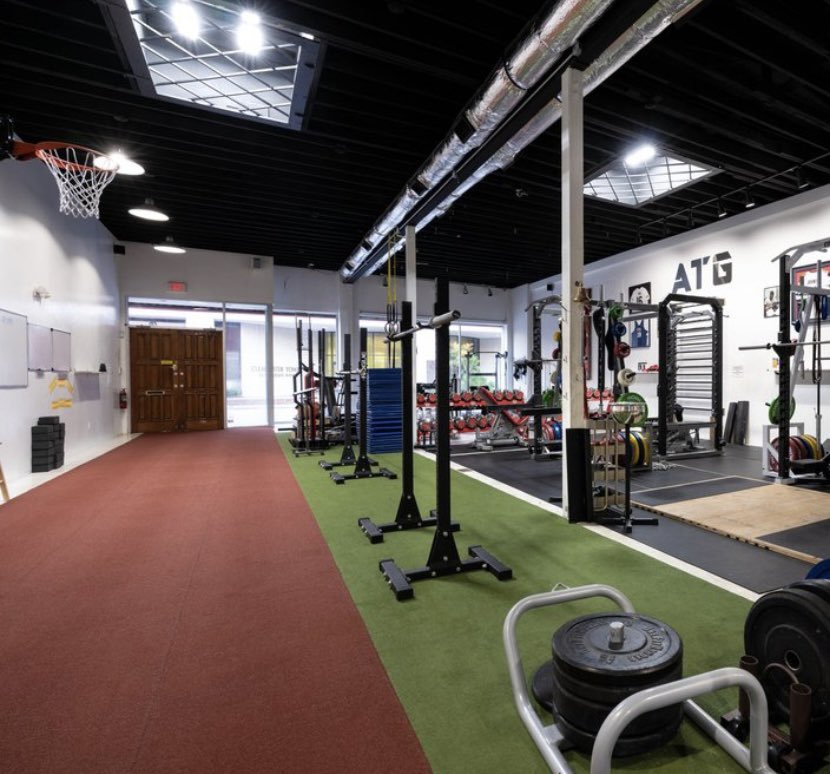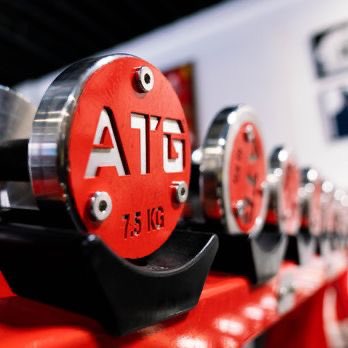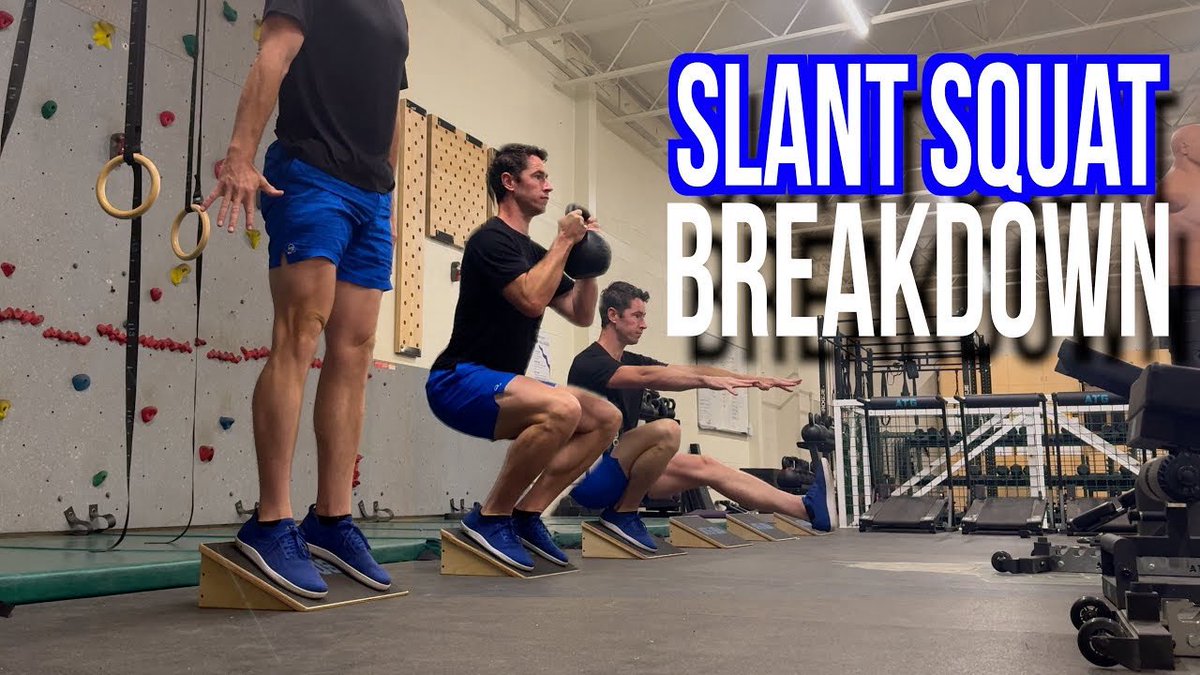ATG Upper Body Philosophy
Can we have more athletic, mobile and resilient shoulders, as a result of our basic strength exercises?
My main theory is:
Press and Pull ✅✅
-but through your full range of motion
-and at all angles
Let’s take a look at 3 examples…



Can we have more athletic, mobile and resilient shoulders, as a result of our basic strength exercises?
My main theory is:
Press and Pull ✅✅
-but through your full range of motion
-and at all angles
Let’s take a look at 3 examples…



1. An ATG-style pushup.
The goal is simply to feel good through your natural range of motion.
In that stretched position, you want to feel like a cat ready to spring.
A row would balance the other side, with particular intention to hold the top, not swing.
The goal is simply to feel good through your natural range of motion.
In that stretched position, you want to feel like a cat ready to spring.
A row would balance the other side, with particular intention to hold the top, not swing.
*Notice how far the arms swing back when going for a maximum jump.
Something that often goes unnoticed about the greatest speed/jump “genetic freaks” such as Usain Bolt, is how MOBILE their shoulders are.
And to me, mobility isn’t stretch “or” strength.
It’s both in harmony.
Something that often goes unnoticed about the greatest speed/jump “genetic freaks” such as Usain Bolt, is how MOBILE their shoulders are.
And to me, mobility isn’t stretch “or” strength.
It’s both in harmony.
2. By using more of a parallel grip, you can make an ATG-style chest press.
(And the Incline Powell Raise is an exercise we use to dig deep for the opposing side.)
(And the Incline Powell Raise is an exercise we use to dig deep for the opposing side.)
3. All kids can press overhead with hands in line with ears, but as we get older that stiffens forward.
An ATG-style shoulder press simply means pressing from your tallest posture.
And by using rings, you can get more range at top and bottom of pullups.
An ATG-style shoulder press simply means pressing from your tallest posture.
And by using rings, you can get more range at top and bottom of pullups.
In my personal case, I do the full ATG protocol - but only ONE SET per upper body exercise.
Lower body was my problem. Fixing that made me forever grateful because previously I’d had to give up what I love: basketball.
I simply don’t have an itch for more upper body mass. 🤷♂️
Lower body was my problem. Fixing that made me forever grateful because previously I’d had to give up what I love: basketball.
I simply don’t have an itch for more upper body mass. 🤷♂️

But when I trained a high school football team, they used the same philosophy for more sets, while eating more food. 

I even went to the local steel shop and made special bars for them, so they could barbell bench with their natural range (rather than a straight bar cutting them short). 

And so their egos didn’t take a hit on squats, I had steel ramps made so they had the ankle mobility to go full range (while concurrently training the ankles), and I made 100 pound chains for each side of the bar, so they could lift heavier loads AND full range at the same time. 

We didn’t have a lot of players, so they had to play both offense and defense.
Half the teams we faced were ranked higher than us, and with way more bodies.
I had to care about each of my players’ bodies as if it were my own…
Half the teams we faced were ranked higher than us, and with way more bodies.
I had to care about each of my players’ bodies as if it were my own…
We went undefeated, largely due to a genius young head coach with a HUGE HEART.
My job was just supporting his visions.
But we had no major injuries, which I see as half luck, and half our preparation.
And we wound up with the most D1 scholarships per player in America!
My job was just supporting his visions.
But we had no major injuries, which I see as half luck, and half our preparation.
And we wound up with the most D1 scholarships per player in America!
I still look back with fond memories and gratitude for having been allowed to use my unusual system.
We had the most unusual strength program in America, but in comparison, doesn’t limiting the natural design of the body seem more unusual?
We had the most unusual strength program in America, but in comparison, doesn’t limiting the natural design of the body seem more unusual?
And that’s NOT a knock on any one person.
It is what it is.
I don’t tear down a single person because I don’t see it that way.
My job is digging into solutions, without which it makes perfect sense why mainstream strength training is missing a lot of natural abilities.
It is what it is.
I don’t tear down a single person because I don’t see it that way.
My job is digging into solutions, without which it makes perfect sense why mainstream strength training is missing a lot of natural abilities.
Conclusion:
ATG isn’t me.
And ATG isn’t a sport.
It’s a philosophy you can use to support just about any goal, with greater potential to MOVE and resist breaking down.
And the overall theory is simple:
ENHANCE the natural abilities of the body, rather than restrict them.
ATG isn’t me.
And ATG isn’t a sport.
It’s a philosophy you can use to support just about any goal, with greater potential to MOVE and resist breaking down.
And the overall theory is simple:
ENHANCE the natural abilities of the body, rather than restrict them.
Yours in Solutions,
Ben
Full ATG Protocol:
Equipment to assist this philosophy:
Foot-Shaped Shoes: ATGonlinecoaching.com
ATGequipment.com
UncivilizedSneaker.com
Ben
Full ATG Protocol:
Equipment to assist this philosophy:
Foot-Shaped Shoes: ATGonlinecoaching.com
ATGequipment.com
UncivilizedSneaker.com
• • •
Missing some Tweet in this thread? You can try to
force a refresh













